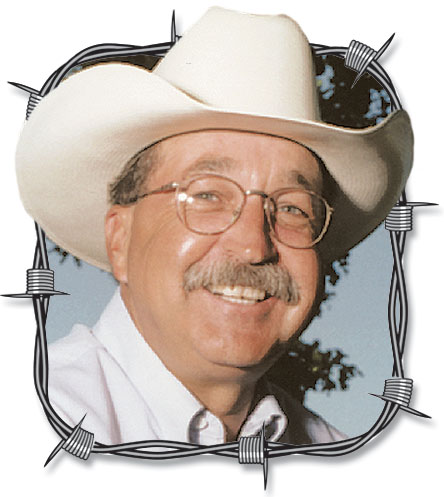 Long before livestock guard dogs were in vogue, to protect farm animals from the predators that roamed the woods around our farms, and years before llamas became fashionable as a deterrent for the same – there was Pete.
Long before livestock guard dogs were in vogue, to protect farm animals from the predators that roamed the woods around our farms, and years before llamas became fashionable as a deterrent for the same – there was Pete.
Pete was a gelded donkey that was acquired by my father sometime around the mid-1960s. At that time, my father and I had started purchasing weaned, lightweight calves from northern Louisiana. The calves were usually around 6 months old, but would only weigh about 250 pounds and looked as if they had only eaten swamp grass and poor quality gumbo for their entire life. They would thrive on Midwestern grass and grain, and we were making pretty good money on their gain – if we could keep them alive. Packs of dogs, coyotes and coyote-dog crosses were wreaking havoc on our calves, and Dad had heard that donkeys were natural enemies of the varmints. A friend of a friend had told him about a donkey for sale only a few miles from our farm. The seller said that Pete would not only keep the wild critters away, but was broke to a harness as well. We hauled him home that day.
The weeks before Pete joined our little farmstead, the morning ritual was to find the calves that had escaped the night before, repair the fences that the calves had stampeded through, and treat the cuts and gashes on the injured calves. Occasionally, we’d even have to bury a dead calf that hadn’t been able to elude the worst of the attacks. Once Pete arrived on the scene, however, it was as if we had hired our own range detective. Every now and then, we’d even find a coyote that had assumed room temperature and sported a perfect imprint of one of Pete’s hind hooves. As chief fence-fixer, I was certain Pete was the greatest investment we’d ever made.
My father was also excited that Pete was harness broke, since a year earlier we had lost Old Buck, a draft horse that my parents had owned for 30 years, and had been half of a team of horses, that Dad had farmed with for several years, before the purchase of his first tractor in 1952. Old Buck had stayed on, in his retirement, as the plow horse for our huge garden. After his death, Dad had used the tractor for garden plowing that one summer and had not liked it. Dad was glad that Pete would take over the next spring.
After keeping our animals safe from wild animals all winter, that next garden season Dad eagerly harnessed the donkey and hitched him to the plow. Pete didn’t throw a fit, go crazy or get mean – he just stood. Dad was patient for a while, then, the yelling ensued. After the yelling failed, the cursing started. When the cursing subsided, more verbal abuse was hurled and, still, Pete stood as motionless as a donkey yard ornament. Finally, I was summoned to try to lead the stubborn equine and that, too, failed, as Pete remained steadfast for at least two more hours.
Unharnessed, Pete led easily back to the pasture where he joined the Cajun calves, seemingly knowing that THAT was his job, and his ONLY job. He continued his duty, with perfection, for the remainder of his days on this earth, and Dad eventually traded Pete’s harness for a good, used garden tiller.





